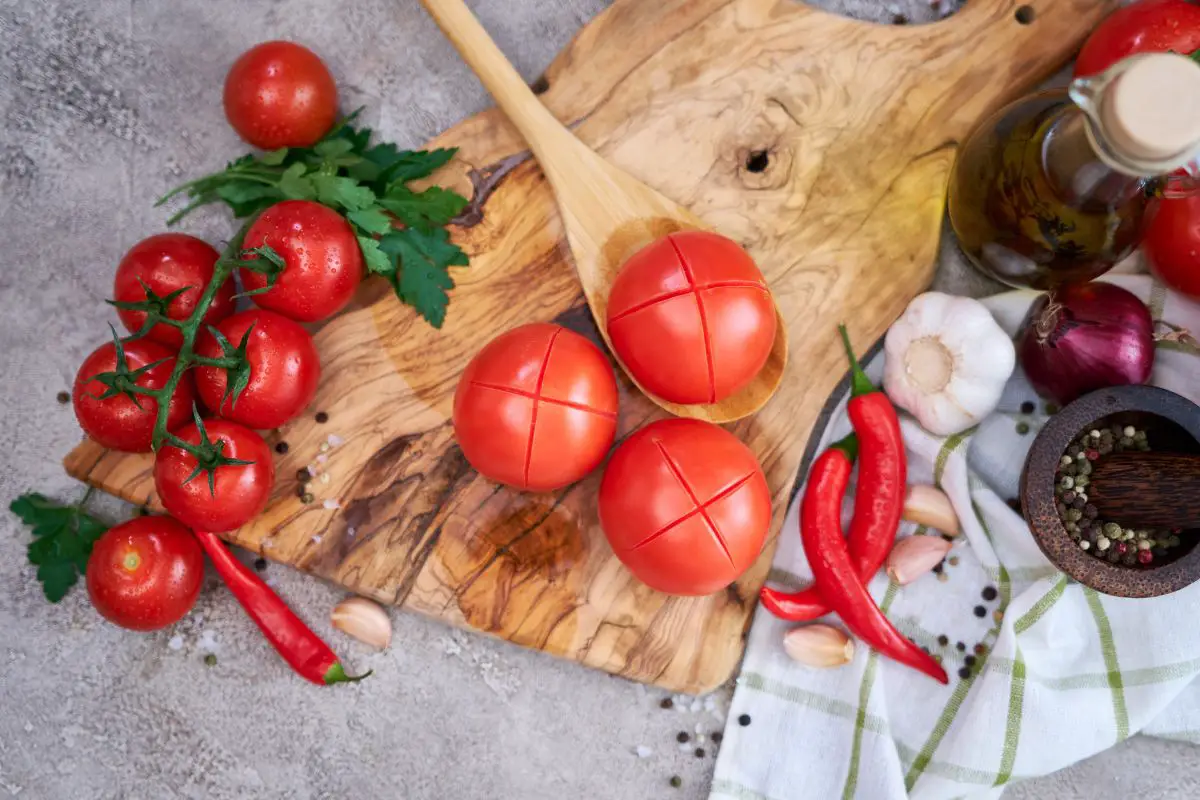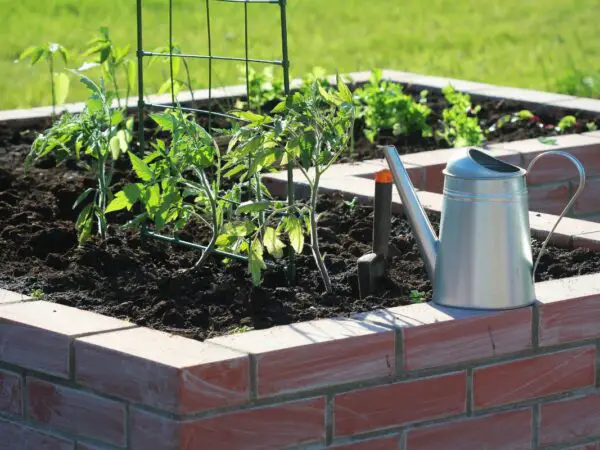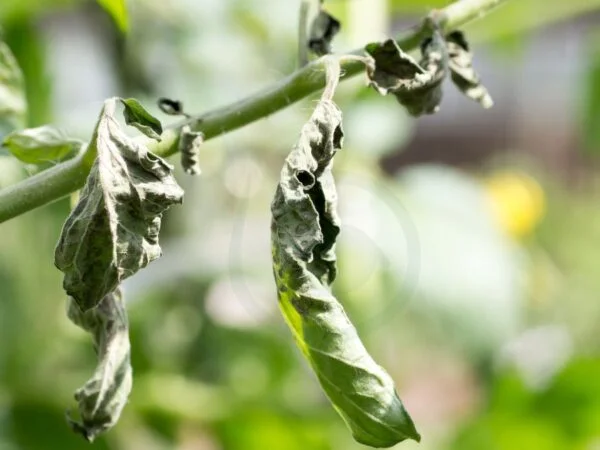Blanching tomatoes is a crucial step in the recipe process of peeling them. It involves boiling the tomatoes to loosen the skin, starting from the bottom. This way of preparing food involves briefly immersing the tomatoes in boiling water using a spoon and then transferring them to an ice-water bath. The blanching process is a great way to prepare tomatoes for a recipe. It not only makes it easier to remove the skin but also helps in deactivating enzymes, making the tomatoes suitable for long-term storage. After blanching, place the tomatoes in ice water to stop the cooking process. By blanching summer tomatoes, you can effortlessly peel off the tomato skin, providing a smoother texture for your dishes.
The traditional blanching method for preserving summer tomatoes requires just a few simple steps and minimal equipment – all you need is a pot of boiling water and some ice-cold water. With this straightforward way of blanching, you can enjoy perfectly peeled tomatoes within seconds. Mastering this technique will save time during peak summer tomatoes season while ensuring that your recipes are free from unwanted skins and seeds.
Tomato Peeling Techniques
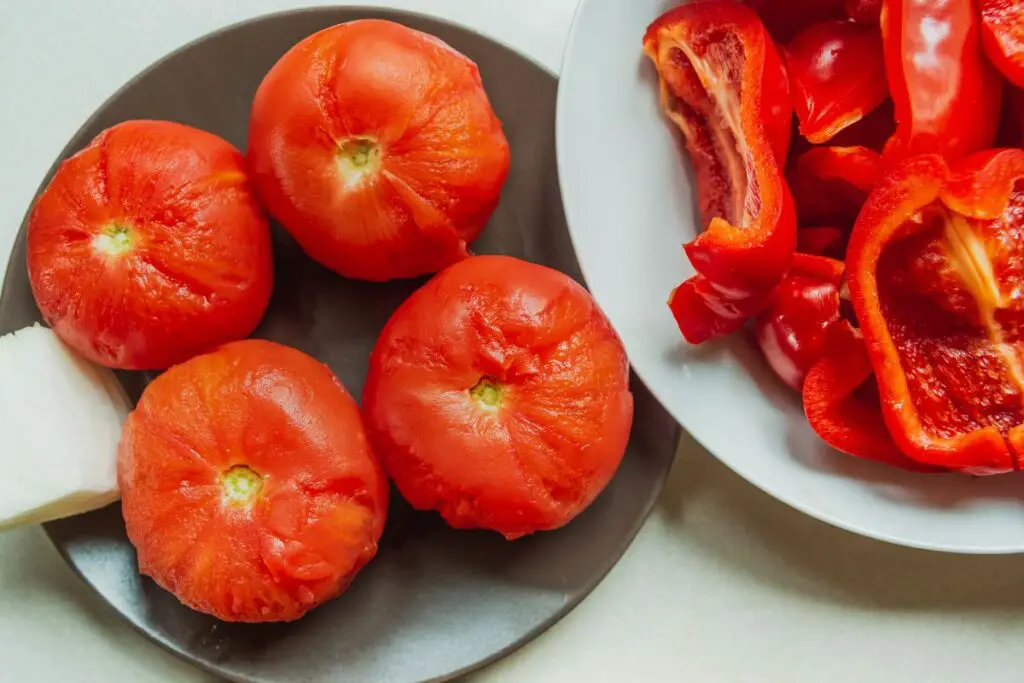
Blanching is the process of briefly immersing tomatoes in boiling water, then quickly transferring them to ice-cold water. This technique serves two primary purposes: to stop enzyme activity that can cause loss of flavor, color, and texture in summer tomatoes, and to loosen the skin for easier removal.
The blanching process involves three key steps: preparing an ice bath, boiling a pot of water, and submerging the tomatoes for a specific duration. The recommended time for blanching tomatoes is typically 30-60 seconds. This short exposure effectively achieves the desired results without cooking the fruit.
Freezing Methods
After blanching your tomatoes, there are several ways you can freeze them for later use. One common method is to place the blanched tomatoes on a baking sheet in a single layer and freeze until solid before transferring them into freezer bags or containers. Another approach involves pureeing or crushing the tomatoes before freezing them in suitable portions.
Freezing blanched tomatoes locks in their freshness and allows you to enjoy garden-fresh flavors even during off-seasons. Moreover, this preservation method retains essential nutrients such as vitamin C and lycopene present in tomatoes.
When freezing blanched tomatoes, it's crucial to remove excess air from freezer bags or containers to prevent freezer burn. Labeling each package with the date will help you keep track of their freshness.
Peeling Process
Peeling blanched tomatoes after preserving them through freezing ensures a smoother texture when used in sauces or soups. To peel these softened fruits efficiently, various methods can be employed based on personal preference; some prefer using a paring knife while others opt for simply squeezing out the pulp from one end.
Efficient peeling also involves scoring an "X" at the base of each tomato before plunging it into boiling water during blanching - this facilitates easier skin removal post-blanching by creating weak points along which it separates from flesh more readily upon cooling down.
Selecting Tomatoes for Peeling
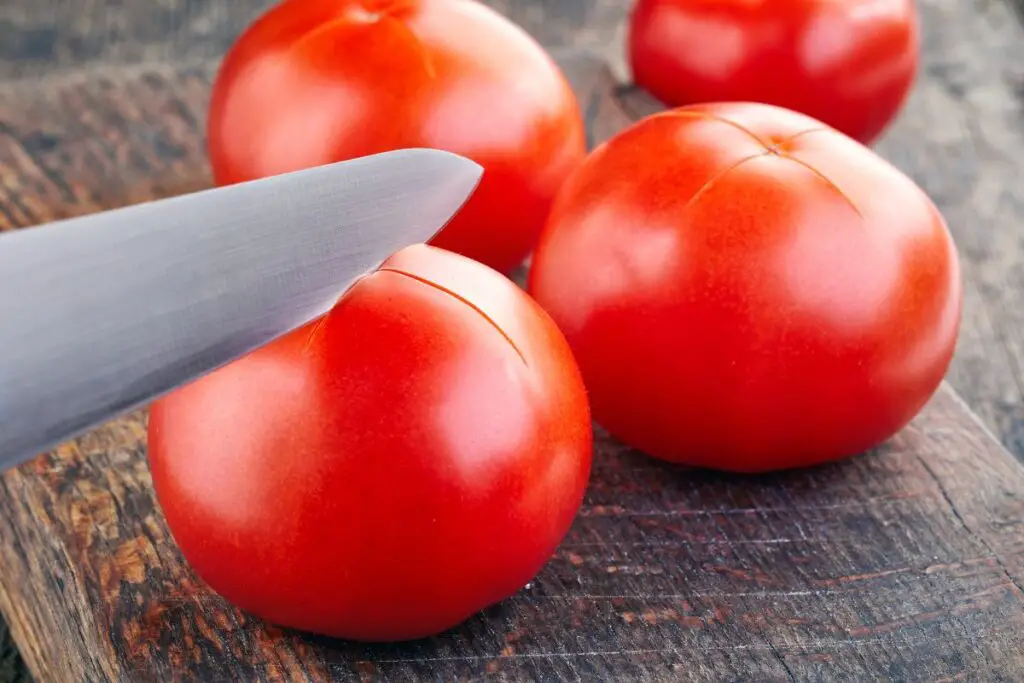
Ripeness and Texture
When blanching tomatoes for peeling, the ripeness of the tomatoes plays a crucial role in determining the blanching time. Ripe, juicy tomatoes usually require a shorter blanching period compared to firmer, less ripe ones. The desired texture for blanched tomatoes is one that allows easy removal of the skin without turning the flesh mushy.
For instance, when dealing with overripe or extremely soft tomatoes, they might not hold up well during blanching and can become too delicate to peel properly afterward. On the other hand, underripe or firm tomatoes may need slightly longer blanching to ensure that their skins loosen adequately without overcooking the flesh.
Tomato ripeness also affects peeling ease after blanching. Perfectly ripe tomatoes tend to have skins that easily slip off after being subjected to hot water briefly. This means less effort is needed during peeling using a paring knife or by hand.
Tomato Varieties
Certain tomato varieties are better suited for blanching and peeling due to their specific characteristics. For example, plum or Roma tomatoes are popular choices because of their firmness and fewer seeds which make them ideal candidates for canning whole or making sauces after they have been peeled.
On the other hand, larger beefsteak varieties may require longer blanch times due to their thicker skins and higher moisture content within each fruit segment. Cherry or grape tomato varieties are smaller in size but contain more gel-like substance around seeds which could affect how long they should be immersed in boiling water before peeling.
It's important to note that different tomato types have varying textures and thicknesses of skin which directly influence how quickly they soften during blanching as well as how easily they can be peeled afterwards.
Blanching Tomatoes for Peeling
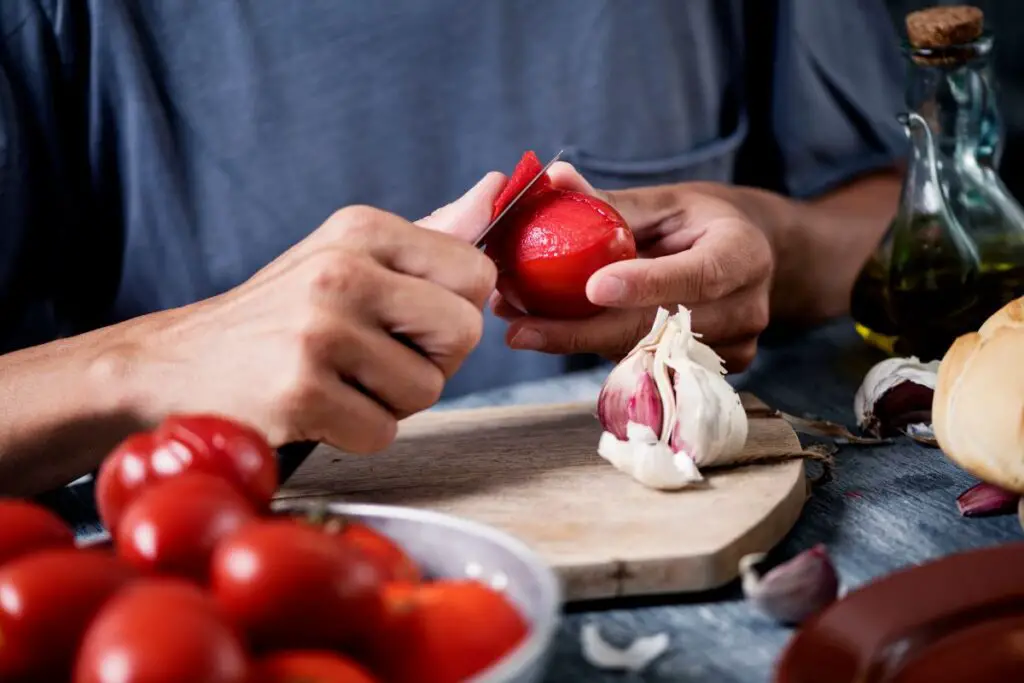
When blanching tomatoes for peeling, it's crucial to use boiling water. The high temperature helps to loosen the skin, making it easier to peel off. Adding salt to the blanching water benefits by enhancing the flavor of the tomatoes as they briefly cook in the hot water. The optimal water temperature for effective blanching is around 190-212°F (88-100°C). This temperature range ensures that the tomatoes are heated sufficiently for skin removal without overcooking them.
The high temperature of boiling water is essential because it helps break down the tomato skins, making them easier to remove. When you add salt to the blanching water, it not only enhances flavor but also helps maintain a good texture and color in your peeled tomatoes. It's important to ensure that your blanching water reaches and maintains an optimal temperature between 190-212°F (88-100°C) for successful results.
Determining the ideal blanching time for tomatoes depends on their size and ripeness. Small or medium-sized ripe tomatoes generally require about 30 seconds in boiling water, while larger or less ripe ones may need up to a minute. Factors influencing this duration include tomato variety, ripeness, and personal preference regarding how easily you want their skins removed. To ensure consistent results through timing, consider performing test batches with a few tomatoes before proceeding with larger quantities.
The ideal blanching time varies based on factors such as tomato size and ripeness level. Smaller or riper tomatoes typically need around 30 seconds in boiling water, while larger or less ripe ones might require up to a minute for effective skin loosening.
After blanching, immediately transferring the tomatoes into an ice bath serves two primary purposes: stopping further cooking and rapidly cooling them down for easy peeling. Rapid cooling preserves both taste and texture by preventing overcooking while also ensuring that peeled tomatoes retain their firmness instead of becoming mushy due to residual heat from blanching.
Once you've finished blanching your tomatoes, promptly placing them into an ice bath halts any additional cooking process while swiftly lowering their temperature for convenient peeling later on.
Step-by-Step Guide to Blanching and Peeling
Blanching tomatoes is a crucial step in the process of peeling them. The blanching timeframe refers to the duration for which the tomatoes are immersed in boiling water. This step is essential as it helps loosen the skin, making it easier to peel off.
The general blanching timeframe for tomatoes ranges from 30 seconds to 1 minute. However, this can vary depending on factors such as the size and ripeness of the tomatoes. Smaller or less ripe tomatoes may require closer to 30 seconds, while larger or riper ones might need up to a minute.
It's important not to over-blanch the tomatoes, as this can start cooking them instead of just loosening their skins. Over-blanching can result in mushy or overly soft tomatoes, which may not be ideal for certain recipes that call for firm, fresh tomato texture.
When blanching timeframes are adhered to correctly, they ensure that you achieve perfectly peeled tomatoes without compromising their taste and texture.
Peeling Tips
After blanching your tomatoes for the appropriate timeframe, it's time to move on to peeling them. Here are some peeling tips that can help make this process efficient and effective:
Firstly, after blanching your tomatoes according to the recommended timeframe — whether it was around 30 seconds or up to a minute — immediately transfer them into an ice bath. Plunging them into cold water stops the cooking process and makes handling easier by cooling down their temperature quickly.
Next, gently pick up each tomato from the ice bath and place it onto a cutting board before using a paring knife or your fingers (if they're cool enough) starting at one end where you scored previously; carefully peel back its skin with minimal effort due largely thanks partly because of how effectively they were blanched earlier.
Remember that if you find any stubborn bits of skin clinging onto your peeled tomato don't worry! Just use your paring knife gently scrape away those remnants without wasting too much flesh underneath.
Scoring Tomatoes
Before blanching your tomatoes according within whatever timeframe is suitable based on their size and ripeness level scoring them beforehand could significantly improve results when peeling later on. Scoring involves making shallow cuts across each tomato's base before immersin' 'em in boiling H2O; doing so allows steam access beneath tough outer layers leading ultimately towards more effortless removal afterwards!
Uses of Peeled Tomatoes
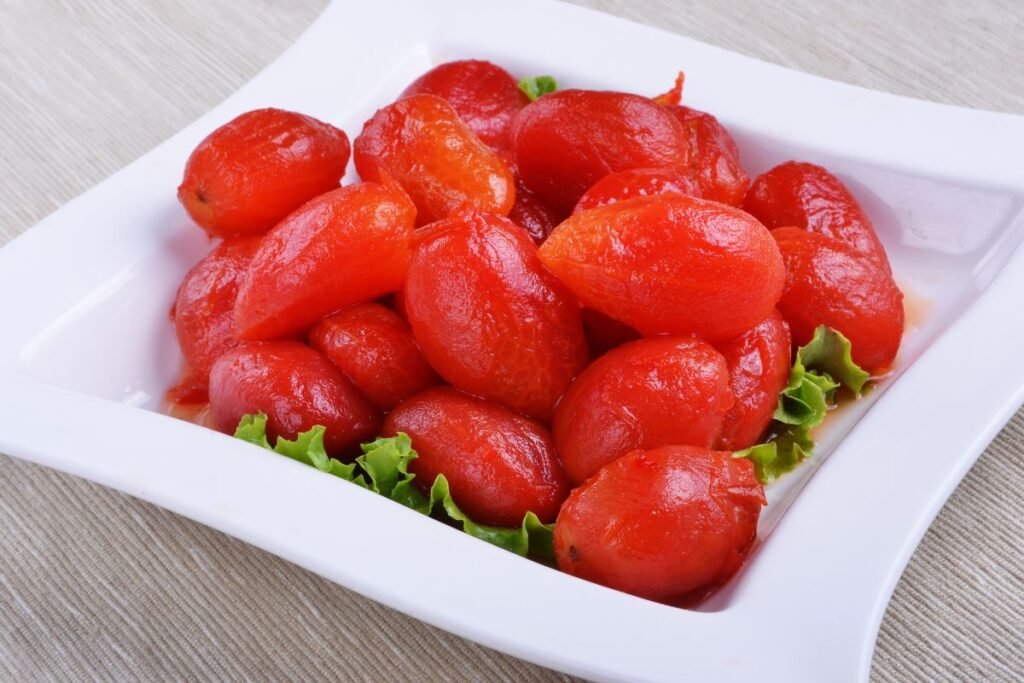
Blanching tomatoes for peeling is an essential step in various cooking applications. Once the tomatoes are blanched, the skin comes off easily, making them ideal for sauces, soups, and stews.
Peeled tomatoes are commonly used in dishes like marinara sauce or tomato soup. The removal of the skin enhances the texture and appearance of these dishes.
In Italian cuisine, peeled tomatoes are a key ingredient in pasta sauces such as arrabbiata or amatriciana. The process of blanching ensures that only the flavorful flesh is used.
Recipe Ideas
. They can be used to create fresh salsas for tacos or nachos.
Moreover, they can also be incorporated into homemade ketchup recipes where smoothness is desired without any chunks from tomato skins.
The versatility of peeled tomatoes extends to chutneys and relishes as well. These preserved condiments benefit from using blanched and peeled tomatoes due to their improved consistency.
Freezing Blanched Tomatoes
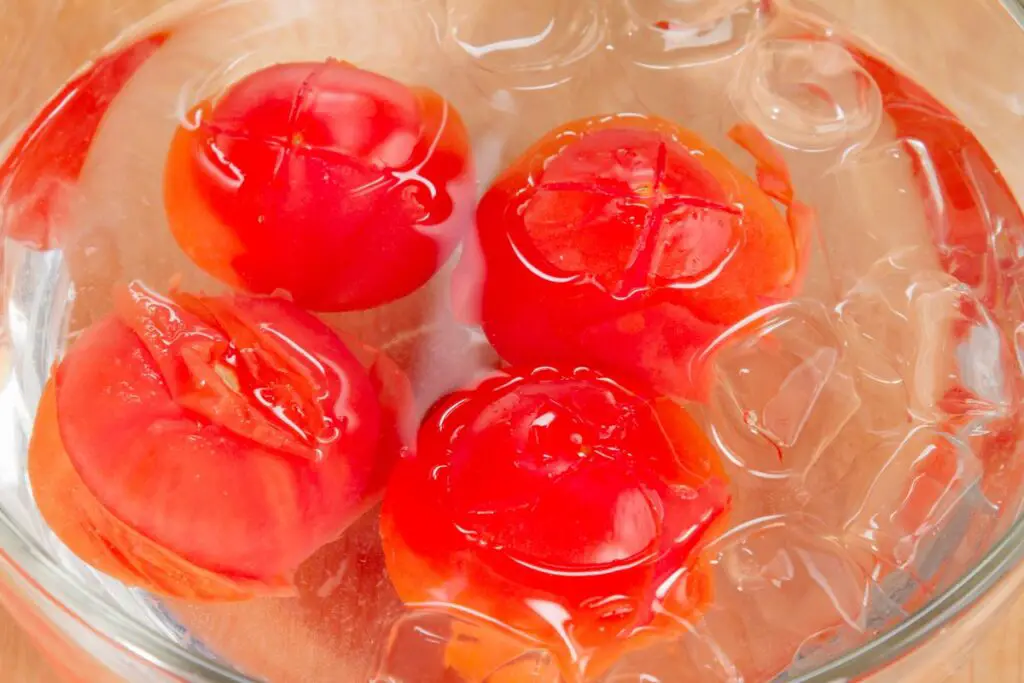
Packaging Methods
The packaging method is crucial to maintain their quality. Airtight containers or freezer bags are ideal for storing blanched tomatoes. Make sure to leave some space in the container or bag as the tomatoes will expand when frozen. This prevents the containers from bursting and allows for easy stacking in the freezer.
It's important to remove as much air as possible before sealing the containers or bags. Air can cause freezer burn, which deteriorates the texture and flavor of the tomatoes over time. Labeling with a date is also essential so you can keep track of how long they have been stored.
To ensure that your frozen tomatoes stay fresh, consider using a vacuum sealer if available. Vacuum-sealed packages remove all air, providing an optimal environment for preserving the quality of your blanched tomatoes.
Freezer Lifespan
Blanching extends the lifespan of frozen tomatoes significantly by deactivating enzymes that would otherwise cause them to spoil quickly in freezing temperatures. When properly packaged, blanched tomatoes can last up to 12 months in a standard freezer without sacrificing taste or texture.
The recommended storage duration ensures that you enjoy high-quality frozen tomatoes throughout different seasons until new batches become available for harvest. It's advisable to use older batches before newer ones, maintaining a "first in, first out" approach to avoid any wastage due to prolonged storage.
Storing Peeled Tomatoes
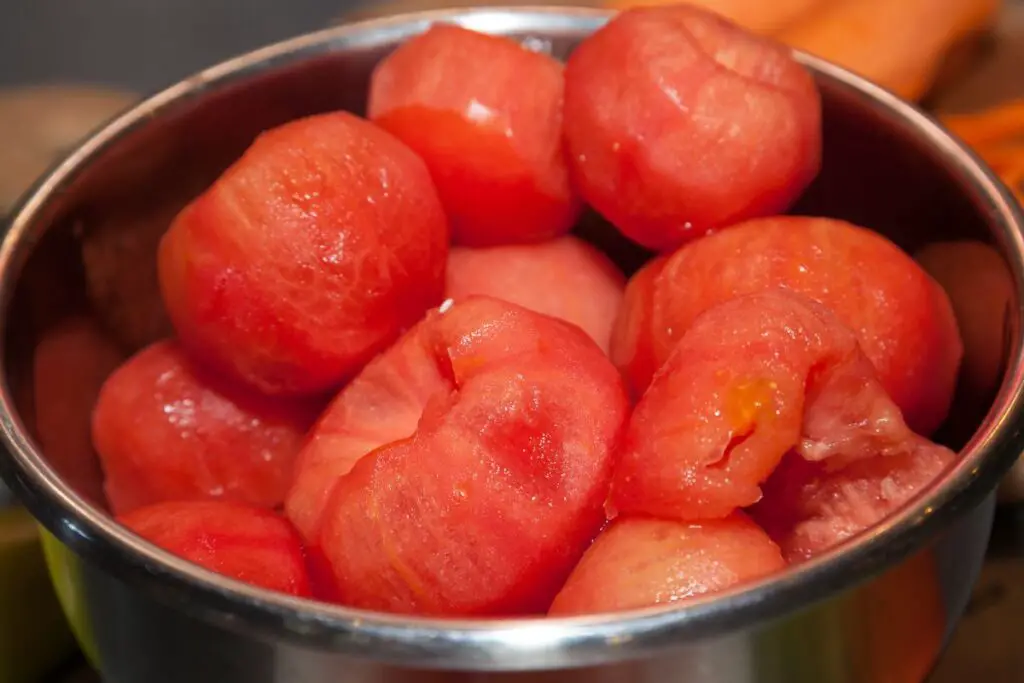
Refrigeration Tips
After peeling tomatoes, it's essential to store them properly to maintain their freshness. If you plan to use the peeled tomatoes within a few days, refrigeration is the best option. Place the peeled tomatoes in an airtight container or resealable plastic bag before storing them in the refrigerator. This will help prevent any moisture loss and keep them fresh for longer.
Refrigerated peeled tomatoes should be used within 3-4 days for optimal flavor and quality. Beyond this timeframe, they may start losing their taste and texture. When using refrigerated peeled tomatoes, always check for any signs of spoilage before incorporating them into your recipes.
To ensure that your peeled tomatoes stay fresh in the refrigerator, make sure to remove any excess air from the storage container or bag before sealing it. This will help prevent oxidation and maintain the quality of the peeled tomatoes.
Shelf Life Considerations
When considering how long to blanch tomatoes for peeling, understanding shelf life is crucial. Once peeled and stored correctly, freshly peeled tomatoes can last up to 6-8 months when frozen at 0°F (-18°C) or below.
However, if you opt for refrigeration instead of freezing, it's important to note that while refrigerated peeled tomatoes have a shorter shelf life compared to frozen ones, they are still suitable for short-term use in various dishes such as sauces, soups, stews, and salsas.
It's also worth noting that proper handling and storage play significant roles in extending the shelf life of peeled tomatoes regardless of whether they are kept in the refrigerator or freezer.
Reasons for Peeling Tomatoes
Texture and Digestibility
Blanching tomatoes for peeling is crucial as it helps to loosen the skin from the flesh, making it easier to remove. The blanching process also improves the texture and digestibility of the tomatoes. When you blanch tomatoes for just the right amount of time, usually around 30-60 seconds, it breaks down the cell walls under the skin without cooking the flesh.
This brief exposure to hot water makes it easier to peel off the skins without affecting the overall texture and juiciness of the tomato. As a result, when you use blanched tomatoes in your recipes, such as sauces or salsas, you won't encounter unpleasant chewy bits of tomato skin that can interfere with enjoying your dish.
Blanching also contributes to improved digestibility by breaking down tough fibers in the skins. This means that after peeling and incorporating them into your dishes, blanched tomatoes are easier on digestion compared to their unpeeled counterparts.
Enhanced Flavor
When considering how long to blanch tomatoes for peeling, another important aspect is its impact on flavor enhancement. Blanching not only aids in removing skins but also plays a role in intensifying and enhancing the natural flavor of tomatoes.
By subjecting them briefly to hot water before shocking them in an ice bath or running them under cold water, this process halts any further cooking while retaining their fresh taste. As a result, blanched peeled tomatoes are often used in dishes where their pure essence shines through more prominently.
The removal of tough skins allows seasonings and flavors from other ingredients like herbs or spices to penetrate more effectively into each slice or chunk during cooking. This enhances not only their own taste but also elevates every component within a recipe where they're utilized.
Tips for Using Blanched and Peeled Tomatoes
Seasoning Suggestions
Simplicity is key. A pinch of salt, a dash of freshly ground black pepper, and a drizzle of high-quality olive oil can elevate the flavor profile of the tomatoes without overpowering their natural taste. These basic seasonings enhance the sweetness and acidity of the tomatoes, making them versatile for various recipes.
Fresh herbs like basil, parsley, or oregano can bring an aromatic dimension to the blanched and peeled tomatoes. For instance, finely chopped basil adds a fragrant freshness that complements pasta dishes or bruschetta toppings beautifully. Moreover, a hint of minced garlic can infuse a subtle savory undertone into the tomatoes.
Incorporating these simple yet impactful seasoning suggestions ensures that the blanched and peeled tomatoes remain versatile for use in diverse culinary creations while enhancing their natural flavors.
Incorporation Techniques
After understanding how long to blanch tomatoes for peeling, knowing effective incorporation techniques is crucial for maximizing their usage in cooking. One popular method is crushing blanched and peeled tomatoes by hand to create a rustic texture ideal for chunky sauces or salsas. Gently squeezing them breaks down the flesh while retaining some texture, adding depth to dishes like marinara sauce or homemade salsa.
Another technique involves dicing blanched and peeled tomatoes into small cubes. This method provides evenly distributed tomato pieces suitable for incorporating into soups, stews, or fresh salsas. The uniform size ensures consistent distribution throughout the dish without overwhelming other ingredients.
Furthermore, blending blanched and peeled tomatoes produces smooth purees perfect as bases for soups or sauces such as creamy tomato bisque or marinara sauce. This technique creates velvety textures that seamlessly blend with other ingredients when creating flavorful culinary masterpieces.
By mastering these incorporation techniques after determining how long to blanch tomatoes for peeling allows individuals to unleash creativity in various recipes while enjoying the benefits of using fresh produce at its prime state.
Conclusion
You've now mastered the art of blanching and peeling tomatoes like a pro! With the right techniques and tips, you can effortlessly peel tomatoes for various culinary delights. Whether it's for sauces, soups, or stews, your peeled tomatoes will elevate your dishes to a whole new level. So, grab those ripe tomatoes, blanch them to perfection, and get ready to amaze your taste buds!
Now that you're equipped with the knowledge to peel tomatoes like a seasoned chef, it's time to put your skills to the test. Head to the kitchen, gather your ingredients, and start incorporating freshly peeled tomatoes into your favorite recipes. Get creative and savor the enhanced flavors that peeled tomatoes bring to your cooking. Happy peeling and happy cooking!
Frequently Asked Questions
How do I select the best tomatoes for peeling?
When selecting tomatoes for peeling, choose ones that are ripe but firm with smooth, unblemished skin. Look for tomatoes that are heavy for their size and have a deep, vibrant color.
How long should I blanch tomatoes to peel them easily?
To blanch tomatoes for easy peeling, immerse them in boiling water for about 30 seconds to 1 minute until you see the skins start to loosen. Then transfer them to an ice bath immediately.
Can I freeze blanched tomatoes for later use?
Yes, after blanching and peeling the tomatoes, you can freeze them by placing the whole or chopped tomatoes into freezer-safe containers or bags. Use within 8-12 months for best quality.
What are some tips for using blanched and peeled tomatoes?
Once peeled, use the blanched tomatoes in sauces, soups, stews or salsas. You can also puree them to make tomato sauce or paste. Store any unused portion of peeled and diced tomatoes in an airtight container in the refrigerator.
Why is it necessary to peel tomatoes before using them in recipes?
Peeling removes tough skin and enhances texture when using fresh tomatoes in various dishes like sauces or salads. It's especially important if you want a smoother consistency without any chewy bits from the tomato skin.
Image Source: Paid image from CANVA

